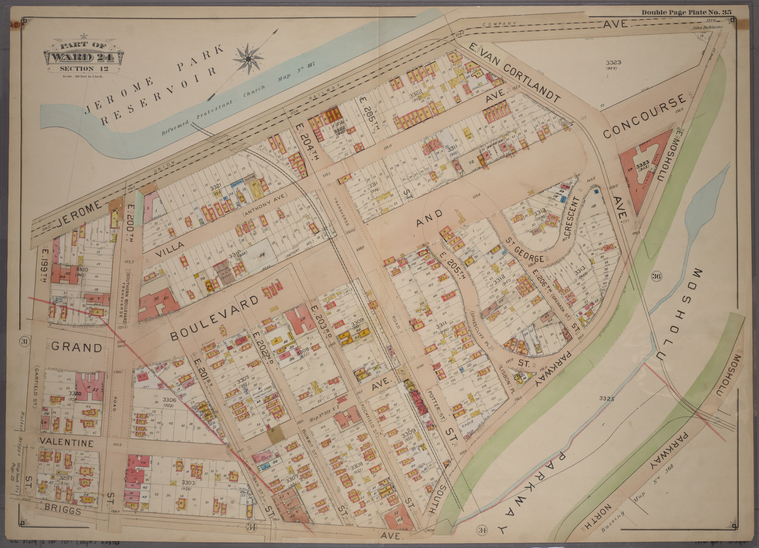There was once a stream on Mosholu Parkway. It was the headwater of a waterway called Mill Brook, which ran down its own little vale parallel to the Bronx River in the vicinity of Webster Avenue until it emptied near the confluence of the Harlem and East Rivers.
 |
| Double Page Plate No. 35, Part of Ward 24, Section 12. [Bounded by Jerome Avenue, Mosholu Parkway North, Briggs Avenue a... (1901) |
http://
Mill Brook is long gone. At a point lost to historical memory, its full length was diverted into underground sewers. The motivation for this radical reengineering of the landscape is unclear; perhaps washing horse manure into an open stream created foul odors better diverted to the sewers. Whatever improvement was intended and perhaps achieved has now outlived its usefulness.
The stream feeds a combined sewer overflow, which results in raw sewage pouring into the waterways during heavy rains. Meanwhile, the topography on the parkway still drains toward the center. The water wants to carve out a stream bed. The result is muddy erosion in the lawns that dries into dustbowls.
 |
| Rain water drains to the center of the parkway, where it erodes the lawn in its attempt to restore its stream bed |
"At comparatively small expense, the natural brook which Mosholu Parkway already possesses can be enlarged, increased in volume by the aid of an artesian well, carried quite through the centre of the tract, and there is a sufficient descent to the grade to allow of the construction of dams enlosing lakelets, the overflow of which might be made to form miniature cascades, spanned by rustic bridges. Such ornamental attractions are possible in the plan of this broad parkway, which possesses natural conditions that permit of a wide scope for the invention and fancy of the landscape architect."
The New Parks Beyond the Harlem, 1887
 |
| As an example of the potential of daylighting Mill Brook on Mosholu Parkway, the gully could include a waterfall similar to this one in Prospect Park |
Awesome idea!
ReplyDeleteIt was between 1873 and 1876 that Mill Brook was buried, and Brook Avenue was built roughly where it used to run. There are historical references to it as a nuisance as late as 1873 [Schwartz, "Community Building on the Bronx Frontier; unpublished Ph.D. thesis, U of Chicago, 1972] In 1874, its location in what is now the West Bronx became annexed to NYC, however, the work of filling and diverting the Brook was probably delayed due to the financial crisis of 1873. Brook Avenue opened in 1876 according to McNamara in "History in Asphalt."
ReplyDelete